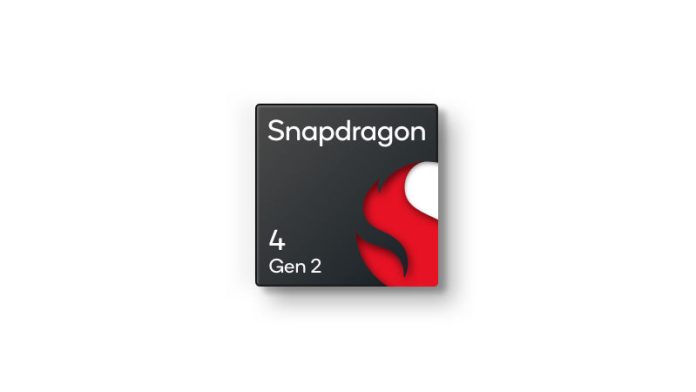Qualcomm revealed the Snapdragon 4 Gen 2 (SM4450) on June 26 2023. This is the first processor in the series to enable the enhanced 3GPP Release 16 version of 5G thanks to the Snapdragon X61 modem. Additionally, this is the first 4nm Snapdragon 4-series processor.
The foundry is unnamed by Qualcomm, but the newer node should offer increased overall effectiveness. For comparison, the Gen 1 chip is manufactured at a 6nm (TSMC) process, whereas the 480 is at an 8nm (Samsung) process.
Snapdragon 4 Gen 1 Vs Snapdragon 4 Gen 2
| Features | Snapdragon 4 Gen 1 | Snapdragon 4 Gen 2 |
| Camera | Up to 108MP | Up to 108MP, up to 32MP Zero Shutter Lag |
| Charging | Quick Charge 4+ | Quick Charge 4+ |
| CPU | 2x 2.0GHz + 6x 1.8GHz | 2x 2.2GHz + 6x 2.0GHz |
| Display | Up to FHD+ @ 120fps | Up to FHD+ @ 120fps |
| GPU | Adreno 619 | – |
| ISP | Triple | Dual (12-bit) |
| Local | Wi-Fi 5, Bluetooth 5.1 (aptX) | Wi-Fi 5, Bluetooth 5.1 (aptX) |
| Modem | X51 (2.5Gbps down, 800Mbps up) | X61 (Rel. 16, 2.5Gbps down, 900Mbps up) |
| Process | 6nm (TSMC) | 4nm (?) |
| RAM | LPDDR4x 2,133MHz | LPDDR5x 3,200MHz |
| Storage | UFS 2.2 | UFS 3.1 (2-lane) |
| USB | 3.2 Gen 1 | 3.2 Gen 1 |
| Video | Up to 1080p @ 60fps | Up to 1080p @ 60fps, EIS |
The new CPU includes six 2.0GHz efficiency cores and two 2.2GHz performance cores. As a consequence, the SD 4 Gen 1 performs 10% better as a result. The Adreno GPU’s support for displays up to FHD+ at 120 frames per second is the same; there are no specifics available.
The new processor uses faster RAM, LPDDR5x (up to 3,200MHz), which is more significant. Additionally, manufacturers have the option of giving phones UFS 3.1 (2-lane) storage. Look at the table below for further information.
